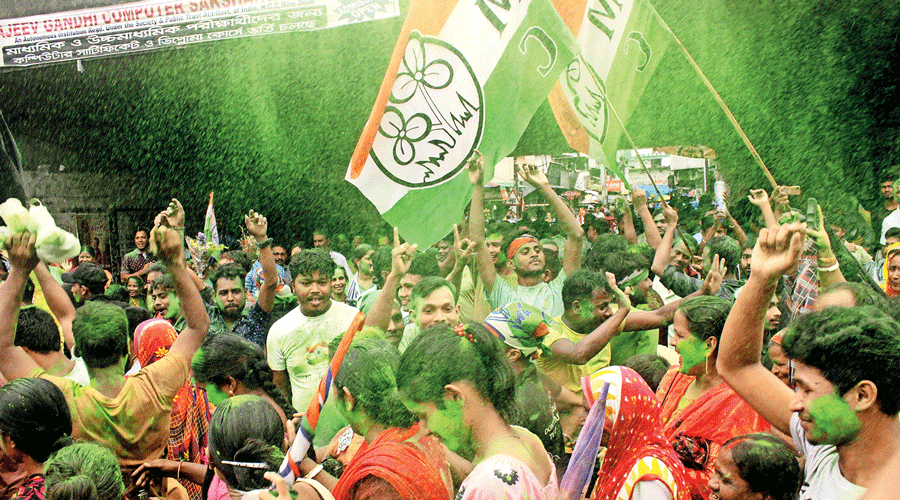A number of analyses have been offered to explain the Trinamul Congress’s impressive victory in the last assembly elections in Bengal. What has been ignored in most of these analyses is the role of ‘party-society’, a tool that is unique to political mobilisation and political communication in the state. Party-society can be understood as the overwhelming structure of Bengal politics where the party is omnipresent and controls the psychological aspirations of the people. The machinery was developed by the erstwhile Left Front government during its long rule that was a unique combination of ‘centralised organisation’ and ‘decentralised governance’.
The political formation that helms the state at present is similar to the Left regime but with different nuances and equations. Previously, school teachers and government servants helped mobilise the party society. At present, we have something else in place. Like the Left Front, the TMC draws support from the rural hinterland and from beneficiaries of government policies. But one need not belong to the rural elite - school teachers, government employees - to be influential in the party organisation. In this way, the TMC has given importance to suppressed identities.
Today, the neighbourhood clubs form a fulcrum of party-society. These clubs should not be confused with elite institutions. The reinvention of club culture is, in fact, indicative of the subalternisation of politics in Bengal. The party machinery controls the political discourse through these para clubs. The government provides financial assistance to the clubs for them to organise cultural and sporting events and welfare programmes are routed through these in coordination with the local administration.
A number of scholarly works have attributed the changing nature of Bengal’s political culture to subalternisation, a processes that must be understood through the transition of party-society to club-society. The Left was successful in building a social coalition based on radical programmes like ‘Operation Barga’. The lower castes, tribals and minorities were the beneficiaries of this programme and supported the Left regime. But land no longer occupies the centre stage in state politics, The TMC has succeeded in winning over these constituencies with welfare programmes operated through local institutions. The TMC understood that the liberal elite version of party-society must be replaced with more democratised version of club-society to survive longer in Bengal politics. In other words, it retained the form but changed the content.
Would club-society yield dividends that party-society yielded for the Left ? This is a vital question in the present context. The party-society came into being on account of the violent, class-based mobilisation of poor peasants against landlords and, hence, was more ideologically committed as a structure. But the mobilisational spirit of club-society is purely personality-driven. The process is continuing to evolve and this raises questions about the ideological commitment of the members of club-society.
Finally, the edifice of club-society is constantly being challenged by corruption in local administrative bodies. Political violence in the form of infighting among members of the ruling party is also generating tension that adversely affects the edifice of club-society. There is then the Centre-state conflict that can have serious consequences on this mechanism. The bitter feuding between the Centre and the Bengal government can end up creating a fund crunch for the state like never before, apart from jeopardising the principles of cooperative federalism.










